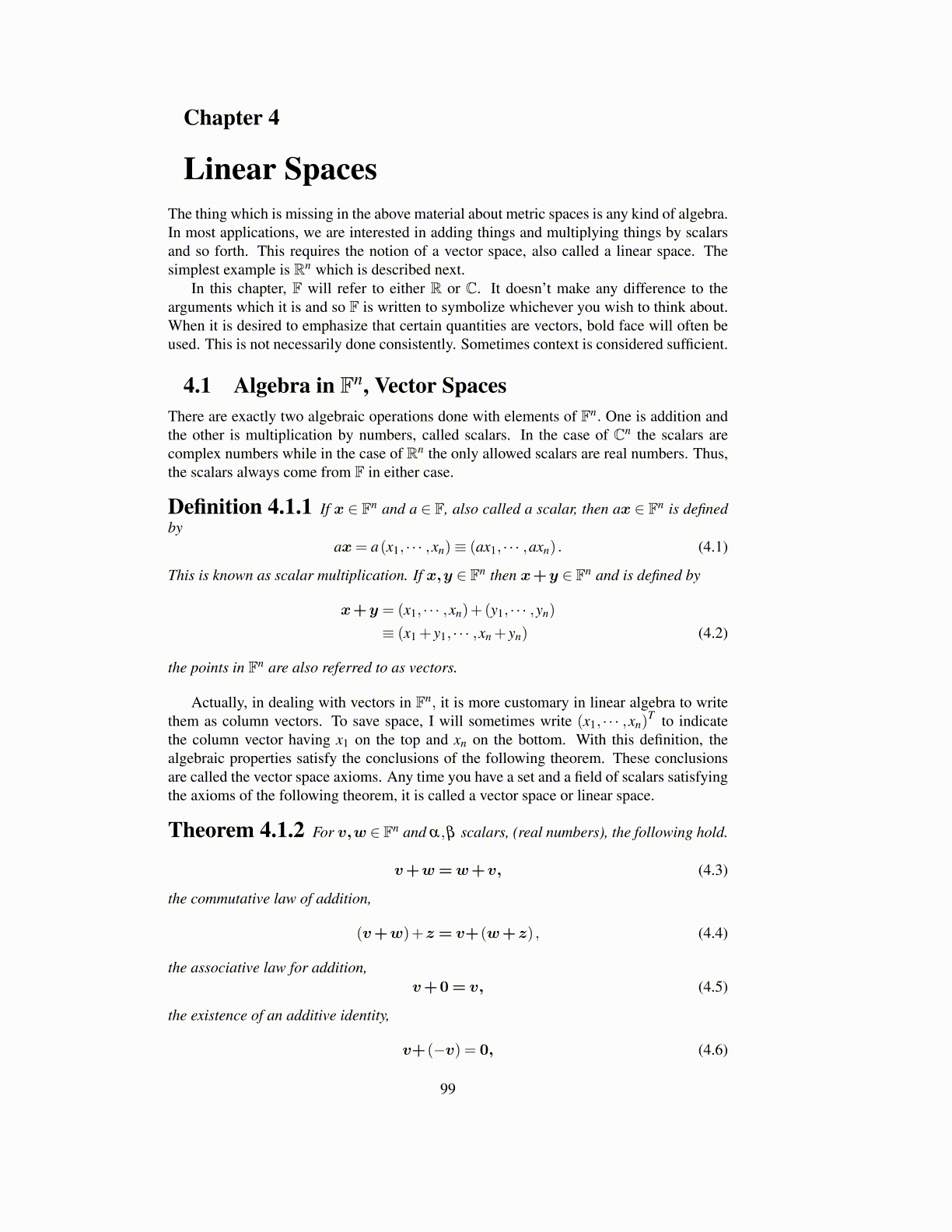
Chapter 4
Linear SpacesThe thing which is missing in the above material about metric spaces is any kind of algebra.In most applications, we are interested in adding things and multiplying things by scalarsand so forth. This requires the notion of a vector space, also called a linear space. Thesimplest example is Rn which is described next.
In this chapter, F will refer to either R or C. It doesn’t make any difference to thearguments which it is and so F is written to symbolize whichever you wish to think about.When it is desired to emphasize that certain quantities are vectors, bold face will often beused. This is not necessarily done consistently. Sometimes context is considered sufficient.
4.1 Algebra in Fn, Vector SpacesThere are exactly two algebraic operations done with elements of Fn. One is addition andthe other is multiplication by numbers, called scalars. In the case of Cn the scalars arecomplex numbers while in the case of Rn the only allowed scalars are real numbers. Thus,the scalars always come from F in either case.
Definition 4.1.1 If x ∈ Fn and a ∈ F, also called a scalar, then ax ∈ Fn is definedby
ax= a(x1, · · · ,xn)≡ (ax1, · · · ,axn) . (4.1)
This is known as scalar multiplication. If x,y ∈ Fn then x+y ∈ Fn and is defined by
x+y = (x1, · · · ,xn)+(y1, · · · ,yn)
≡ (x1 + y1, · · · ,xn + yn) (4.2)
the points in Fn are also referred to as vectors.
Actually, in dealing with vectors in Fn, it is more customary in linear algebra to writethem as column vectors. To save space, I will sometimes write (x1, · · · ,xn)
T to indicatethe column vector having x1 on the top and xn on the bottom. With this definition, thealgebraic properties satisfy the conclusions of the following theorem. These conclusionsare called the vector space axioms. Any time you have a set and a field of scalars satisfyingthe axioms of the following theorem, it is called a vector space or linear space.
Theorem 4.1.2 For v,w ∈ Fn and α,β scalars, (real numbers), the following hold.
v+w=w+v, (4.3)
the commutative law of addition,
(v+w)+z= v+(w+z) , (4.4)
the associative law for addition,v+0= v, (4.5)
the existence of an additive identity,
v+(−v) = 0, (4.6)
99